Roles of the P&F Executive
The P&F’s objectives are to assist the College in building a strong and supportive community of parents, teachers and students, and to support the College in fulfilling its educational responsibilities in the spirit of Catholic co-operation.
As a parent or guardian, what’s in it for me? The P&F provides you with opportunities to connect with other families, to find out what’s happening at CCC, to have a voice on a range of matters, to make decisions on spending the P&F levy in support of the College and learn how you can support students and staff in their College life.
The P&F:
Promotes development of the school community (parents, teachers and students) through supporting school events and promoting social interaction of parents/guardians;
Works closely with the Principal and Leadership Team to achieve common goals, with the College remaining responsible for operational matters;
Promotes a healthy forum for discussion on matters of interest to the College community;
Acts as a liaison point between the wider school community, the Board and the Principal, and
Administers the P&F Levy, acting in consultation with the Principal to prioritise the College’s expenditure requests.
The P&F only operates with the involvement and energy of parents and guardians, but the time commitment is not demanding. All parents/ guardians of current College students are members of the CCC P&F association and are invited to attend our meetings and encouraged to participate in P&F activities
President
These notes should be read and used with any relevant sections of the Association’s Constitution.
The President should preside/chair at all General and Executive Meetings of the Association. In addition to that responsibility, the President should undertake a number of other tasks such as:
Providing leadership for the Association,
Acting as the Associations representative,
Exercising some supervision of the functions of other office bearers,
Encouraging parents and others to participate in the activities of the Association and the school.
Actively pursuing a collaborative working relationship with the Principal.
The duties of the President commence prior to the meeting. The President should ensure that members have been advised of the meeting, that an agenda has been prepared and that the venue and time of the meeting have been advertised.
Additional duties include but are not limited to:
To ensure a quorum is present.
To maintain order of the meeting.
To ensure that members are aware of the minutes of the previous meeting and to obtain confirmation of these minutes.
To give all members the opportunity to speak but also to confine speakers to the matters under discussion.
To be impartial.
Vice President
The specific duty of a Vice-President is to act as Chairman at those meetings from which the President is absent.
In many Associations that is all that is required of a Vice-President, which means they operate during the year as just another member of the Executive. However, the Vice-President’s role can be far greater and the Vice-President should be seen as a potential understudy to the President.
Vice-Presidents should become familiar with the operation of the Association and acquaint themselves with the duties of the President, including a working knowledge of meeting rules and procedures. In addition, Vice-Presidents should offer to act as convenor for any sub-committees established by the Executive and to undertake other tasks to reduce the burden of the President.
